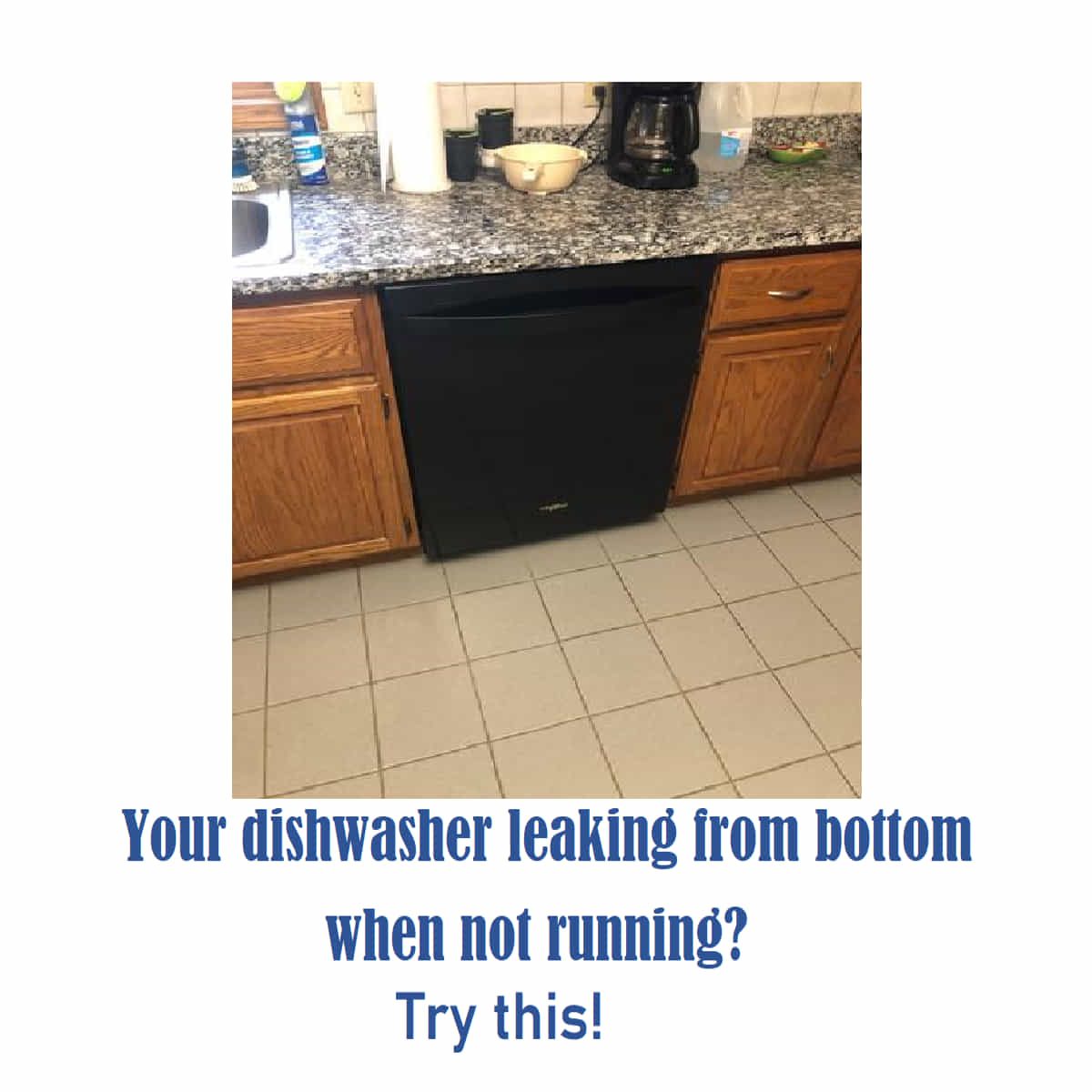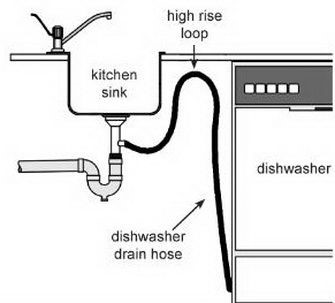As an Amazon affiliate, we earn a commision from qualifying purchases.
If you have noticed that water is pooling around the base of your dishwasher when it is not running, you will definitely be concerned. After all, this water will lead to mold and mildew growing on your floor if it is wooden. If you have a concrete or tiled floor, this water might lead to people slipping and falling.
I am sure you now get the picture of how hazardous it can be.
Now, in this article, we will help you in figuring out the cause of the leak. Additionally, we will show you how to fix the dishwasher.
So, if you have a dishwasher that is leaking from the bottom when it is not running, keep reading to get to the bottom of the problem and see how you can fix it.
Dishwasher leaking from bottom when not running – how to fix the leak
Below are some possible solutions to a dishwasher that is leaking from bottom when it is not running…
Check the state of the dishwasher’s gasket/seal
To begin with, your dishwasher does not drain out all the water after a wash cycle. Some water is normally left inside the tub. This water preserves the seals and prevents them from cracking.
Moving on, if the seals become worn out or damaged, they will create a space for this water to sip out of your unit.
Having said that, if your dishwasher is leaking at the bottom even when it is not running, you should begin by checking the state of your seal gasket as it is the most common cause.
If it is damaged, you should get an OEM replacement depending on your dishwasher’s model.
If you have a Whirlpool, Maytag or Amana dishwasher, you can get a replacement gasket/seal here.
Confirm that your dishwasher is leveled
You will also need to confirm that your washer is properly leveled. When checking this, check its level from front to back and also from side to side.
Why? You may ask.
Well, if the washer is not leveled, water will collect in one part of the unit. As this water accrues, it will reach a point where it will begin to slowly sip out of your unit even when the unit is not running.
With that being said, if your dishwasher is not level, be sure to adjust its legs till it levels out.
Check your water inlet valve
Moving on, the next part you check on is the water inlet valve as it may have worn out over time. When this happens, the valve may begin to leak.
Quick tip: you can be sure if the valve is the culprit by turning the water to the dishwasher off and leaving it for some time. If the dishwasher does not leak during this period, there is a high possibility that the inlet valve is the culprit for the leak.
Now, if you are having a brand-new dishwasher that is leaking from the bottom when not running, a faulty inlet valve may be your suspect.
How?
Well, it could be that you might not have used enough thread seal or Teflon tape when installing your dishwasher. This could result in water leaking through the inlet valve and then dripping its way towards the bottom of the dishwasher.
With that being said, you will need to open up your dishwasher and carefully inspect if the leak is coming from the water valve. If it is, you will need to tighten the inlet valve or replace it – depending on its state.
You can get an OEM inlet valve for LG dishwashers here.
Confirm that your drain hose is properly installed
If the water that is leaking out is dirty, then, chances are that you are looking at a faulty drain hose.
Normally, the drain hose should have a high-rise loop before it enters the drainage system as shown below:
Now, if your dishwasher seems to lack the high-rise loop or it has flattened with time, this might result in water flowing backward after being pumped out of the unit.
Once this water collects inside your dishwasher, it might begin to sip out with time resulting in the leakage.
And while at it, confirm that your drain hose does not have a hole that might be the cause of the leakage – it might have been chewed off by some rodent. In this case, you will need to replace the drain hose.
If you own a Samsung dishwasher, you can get an OEM drain hose here.
And speaking of the drain hose, be sure to also inspect the drain hose valve…
Check your drain hose valve
This is also the case if you note that the water that is leaking from the bottom of your dishwasher appears to be dirty.
The drain hose valve prevents water from flowing back into the dishwasher.
Now, if the drain hose valve is faulty, it won’t open and close as it should and it might not be tight enough to prevent the flow back of water into your washer.
Having said that, you will need to tighten the hose valve. On the other hand, if it is faulty, you will need to get a replacement valve that fits your dishwasher model.
Check your tub
As we have earlier mentioned, dishwashers are designed in such a manner that some water is normally left at the bottom of the tub.
With time, the stainless steel in the tub might lose its anti-corrosive coating – results from the use of improper detergent and tablets.
When this happens, this might lead to rusting which will eventually tear a hole in the tub.
You will need to inspect the tub for any signs of rusting or holes. If you can see any, then, you just found the source of your leakage.
In this case, replacing the tub is much more economical and easier than trying to fix it.
Dishwasher leaking from bottom when not running – final words
When replacing the faulty parts, be sure to get OEM parts for your dishwasher. This is because OEM parts are a great fit for your model. Additionally, OEM parts do outlive generic parts.
Good luck!
ALSO READ:
Dishwasher lights flashing and will not start (Fixed!)
Whirlpool gold series dishwasher troubleshooting [Fix it now]
Whirlpool dishwasher diagnostic mode (How to enter)
Samsung dishwasher diagnostic mode (how to enter)
GE dishwasher diagnostic mode (How to enter)
Whirlpool dishwasher troubleshooting reset procedure
Maytag dishwasher diagnostic mode [How to run]
Maytag dishwasher reset sequence (plus tips)
Bosch dishwasher wont turn on [Fixed]
Frigidaire professional dishwasher troubleshooting guide


